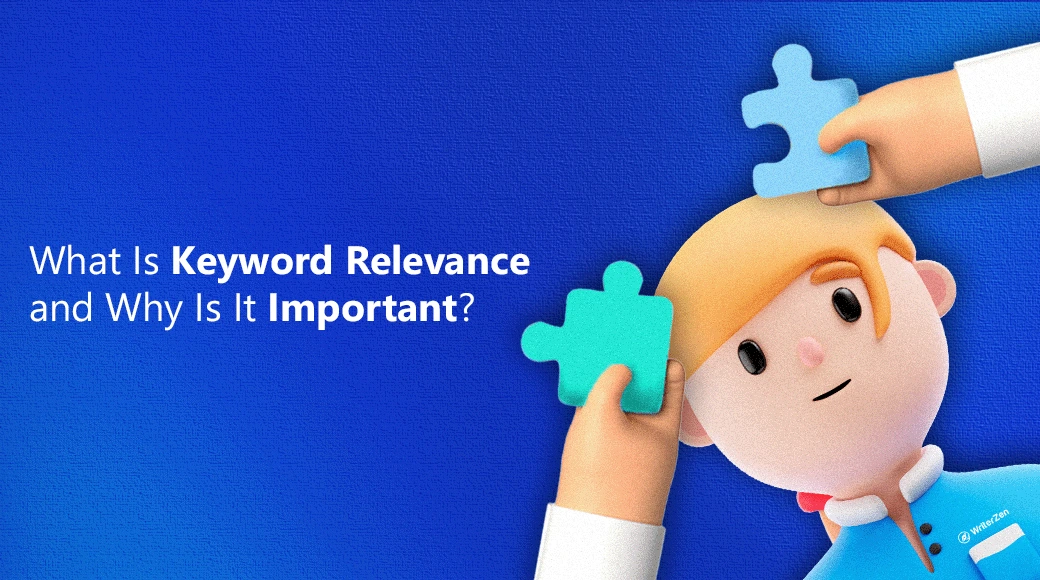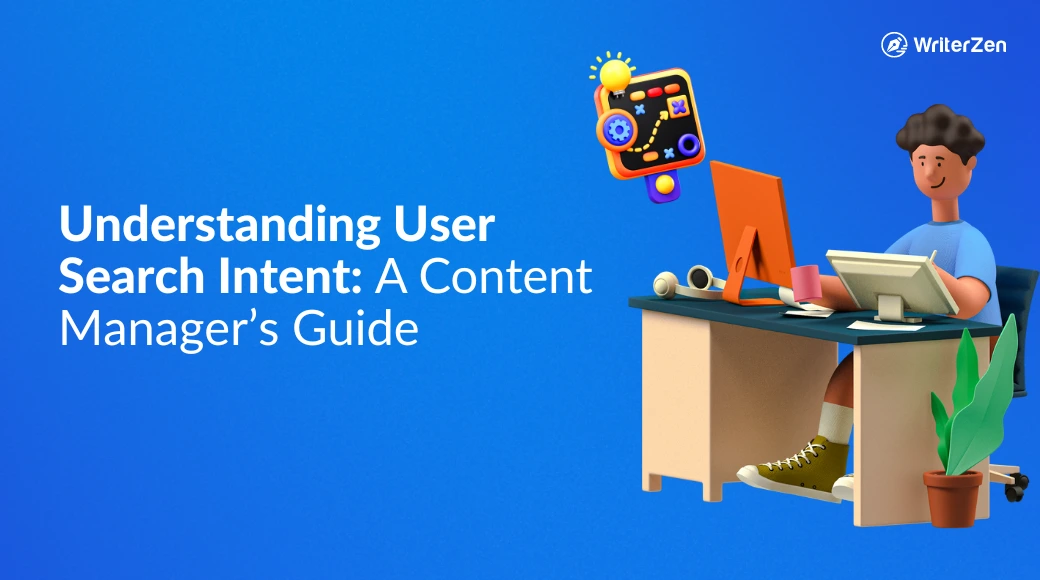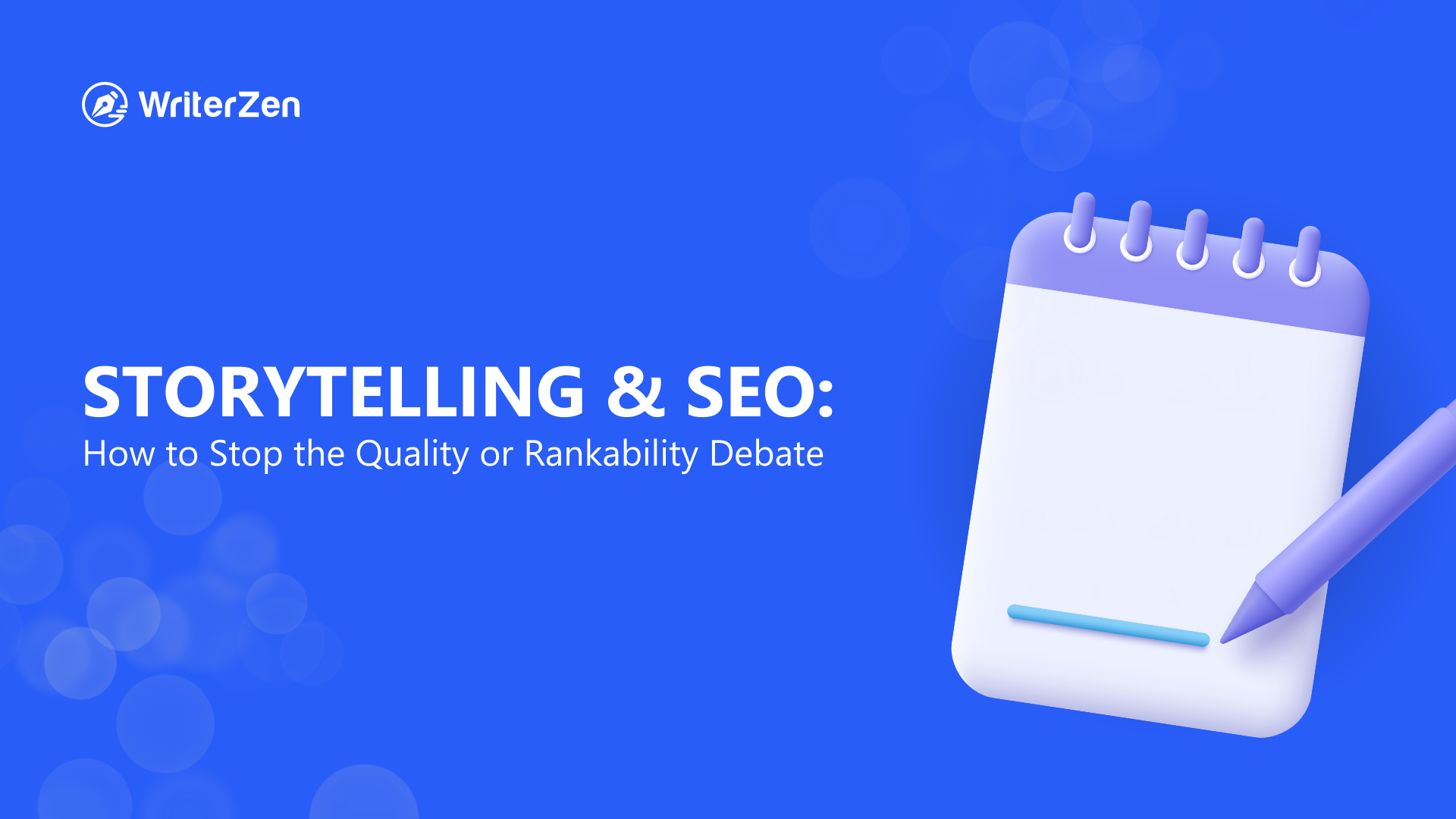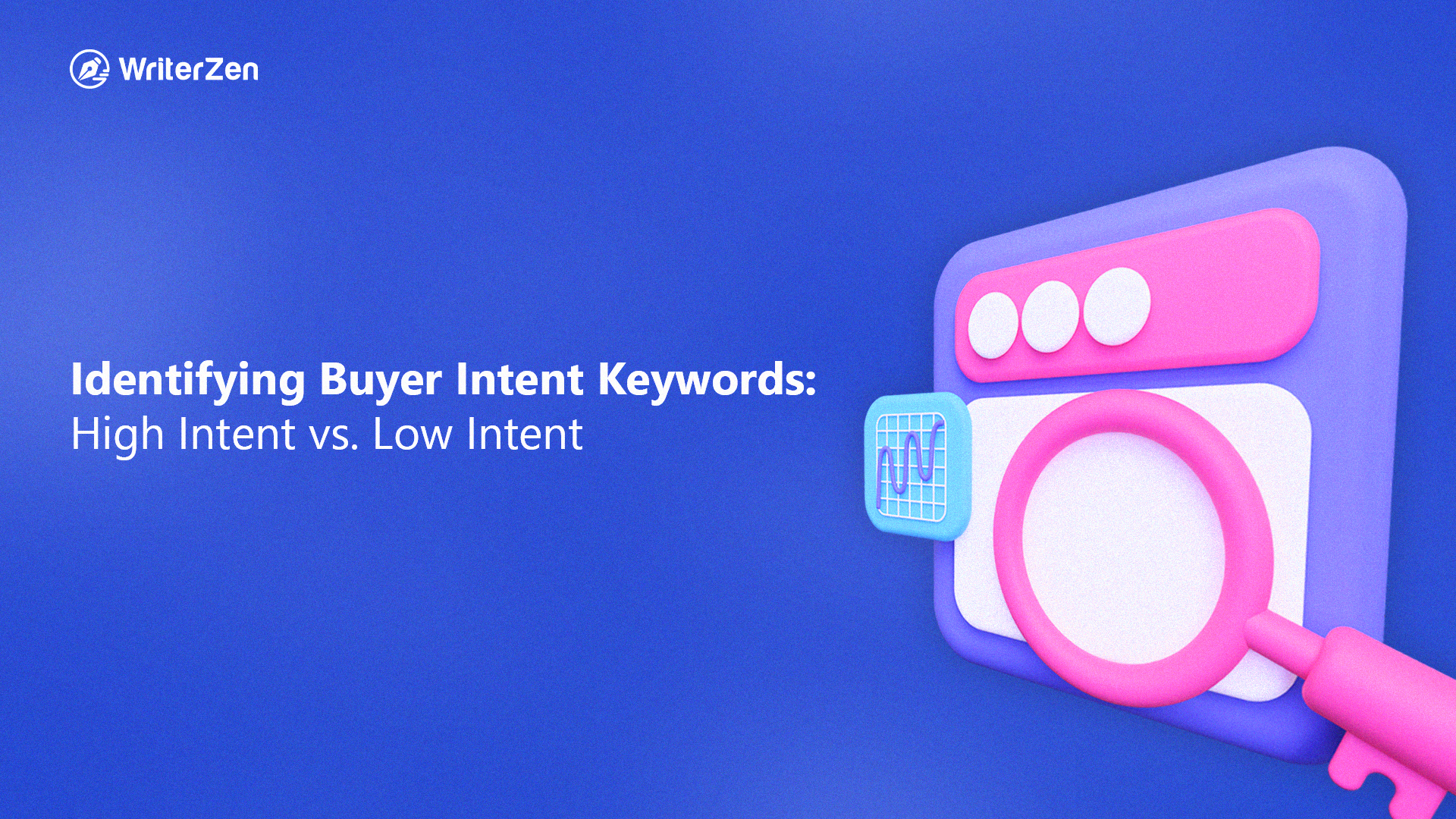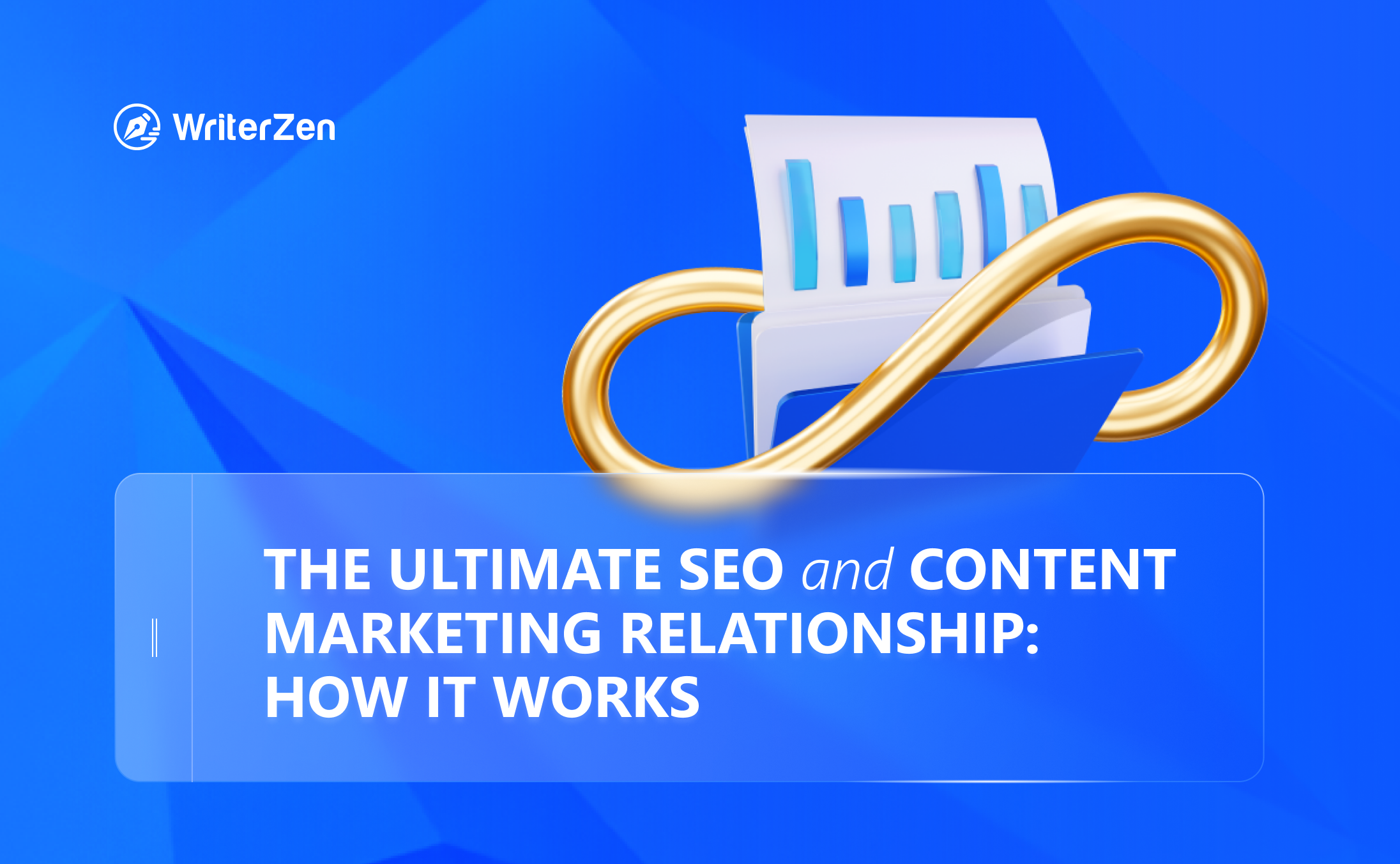Creating compelling content is like composing a symphony. Just as a skilled composer meticulously selects each note to create a sensational piece of music, website owners thoughtfully choose every word to craft content that captivates their audience.
However, with the ever-changing landscape of consumer behavior, it's not enough to simply create exceptional content. You must also be proactive in helping your customers find exactly what they're looking for.
From researching the most effective keywords to optimizing your content for maximum visibility, every detail is essential to ensure your target audience discovers your masterpiece.
This is where the revolutionary concept of Semantic Search comes into play.
Confused? Let's break it down for you.
What Is Semantic Search?
Semantic search is how a search engine first aims to understand the meaning behind a user's search query—context and intent—rather than simply displaying results that match your keywords.
It uses natural language processing (NLP) and machine learning algorithms (MI) to interpret why you are searching for a particular keyword and what you intend to do with your search results once you get them, before delivering results that are relevant to the user's query.
This is important because:
-
People use different words, languages, and tones to express their queries (one person might search for "chicken casserole," while another might query "how to make a one-pot chicken and vegetable dish).
-
Search queries can be unclear and have multiple meanings ("apple" could refer to both the fruit or the technology company).
-
It helps the search engine comprehend the connections and meanings between words (e.g. 'cat" is related to "kitten," or that "pizza" is associated with "Italian food).
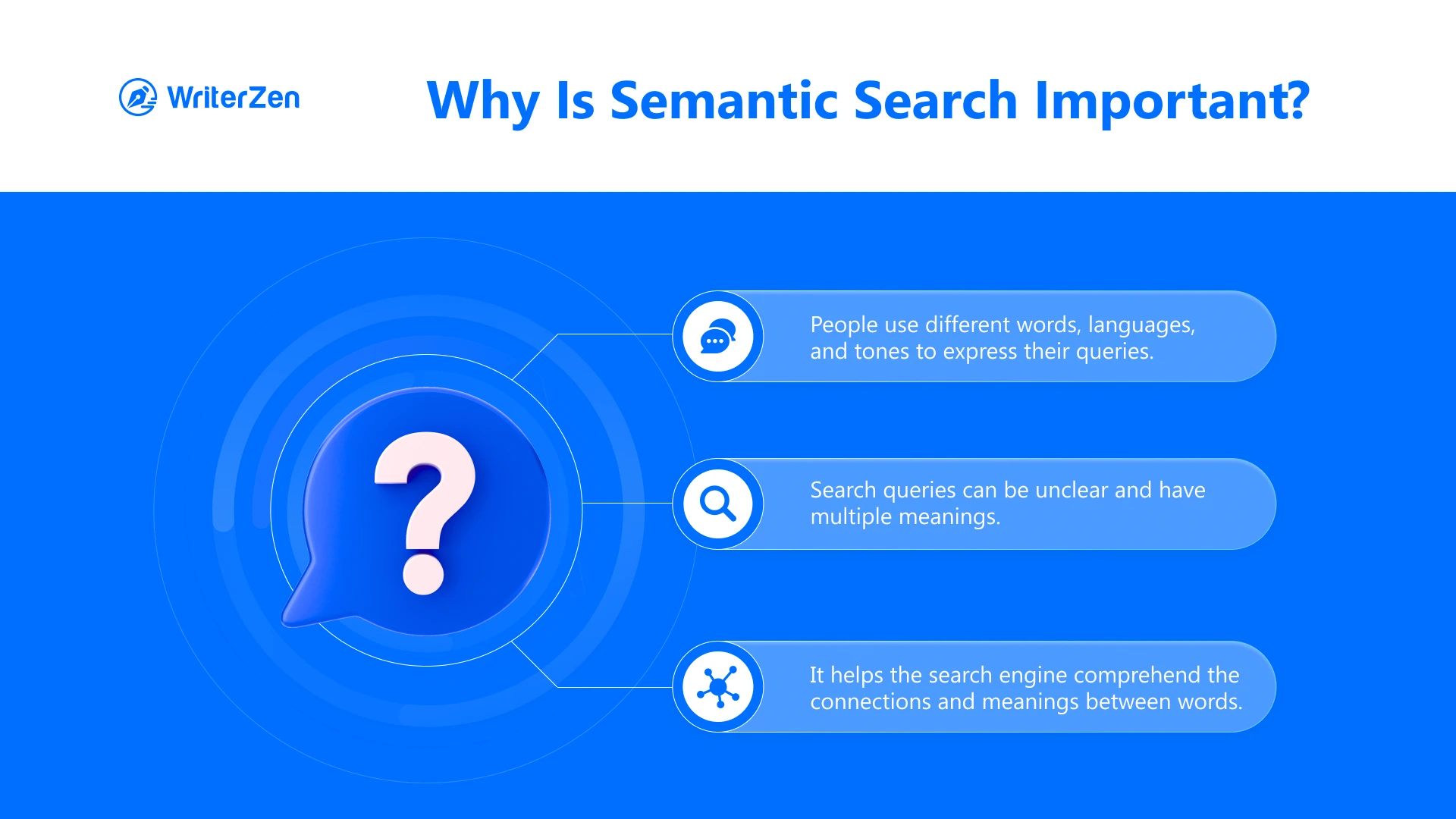
Let's say you are searching for "top sushi spots in town." Your search engine would not just look for the keywords "top," "sushi," and "spots"; it would also factor in your location, previous searches, and user behavior. So, for instance, if you are located in New York City, and you've previously searched for Japanese cuisines, your results would likely include top-rated sushi spots in your area that serve authentic Japanese dishes.
This is how semantic search helps users get highly targeted and accurate SERP results that match their specific tastes and preferences. It is a crucial technology for keeping up with the ever-evolving needs of your audience. It not only boosts your search traffic but also provides your audience with the information they're looking for in a swift, more efficient manner.
Unpacking the History of Semantic Search and Its Impact on SEO
Here's a look at the brief history of the updates and ranking factors that have transformed Google into an advanced and powerful engine capable of understanding complex queries, anticipating needs, and delivering accurate results.
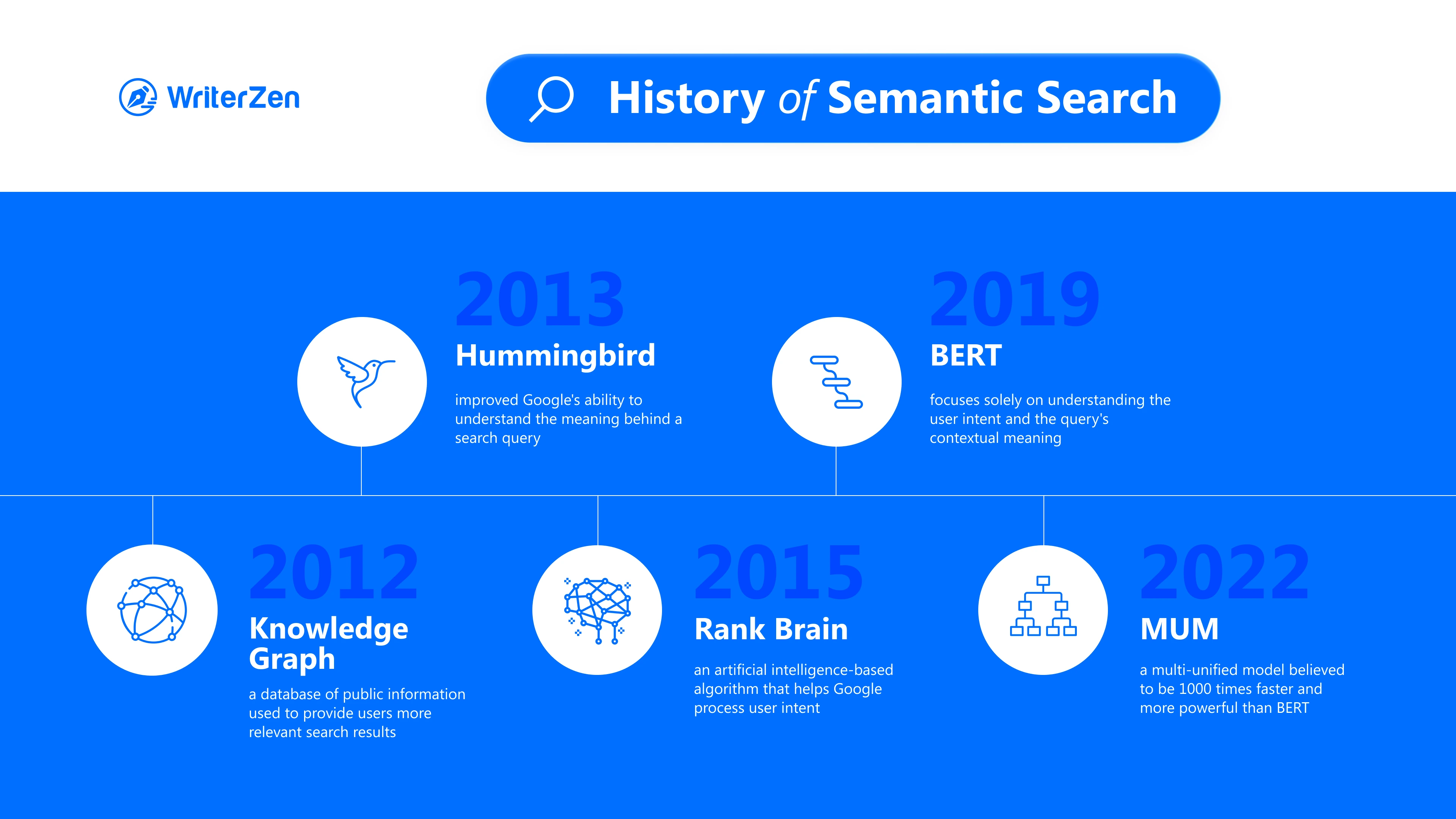
Knowledge Graph
Introduced in 2012, Google’s Knowledge Graph is a database of public information that is used to provide users with more accurate and relevant search results. It has been a key factor in how Google ranks search results ever since it was released.
The Knowledge Graph works by collecting and organizing information about entities - such as people, places, things, relationships, and concepts - into a structured database. This information is then used to help answer search queries more accurately by providing contextual information about the entities being searched for. For example, if you search for "Barack Obama," the Knowledge Graph will provide a box of information that includes a picture, basic biographical information such as his birth date and occupation, and related entities such as his spouse, children, and political party. This allows users to quickly get a sense of who Barack Obama is and his role in politics without having to sift through a lot of irrelevant search results.
You can also search for more complex queries, such as "distance to the sun." In this case, the Knowledge Graph will provide a box with the distance to the sun in miles, as well as related information such as the temperature and mass of the sun.
Hummingbird
Google's Hummingbird update, which was released in 2013, was a major step forward in semantic search. It improved Google's ability to understand the meaning behind a search query and provide more relevant results based on the user's intent.
Before the Hummingbird update, if you typed in "fitness trainer" into Google, you'd probably get results that match those exact keywords. But with Hummingbird, Google would understand that you're looking for a fitness trainer near you and might provide results that match your location, such as "best fitness trainers in New York City."
RankBrain
RankBrain is an artificial intelligence-based algorithm that is like a digital assistant that helps Google process the intent behind a search query.
It identifies related concepts, phrases, synonyms, and relevant semantics to provide the best possible search results. For instance, if you type in "he who must not be named," the search engine knows what you are looking for without specifying the character Lord Voldemort.
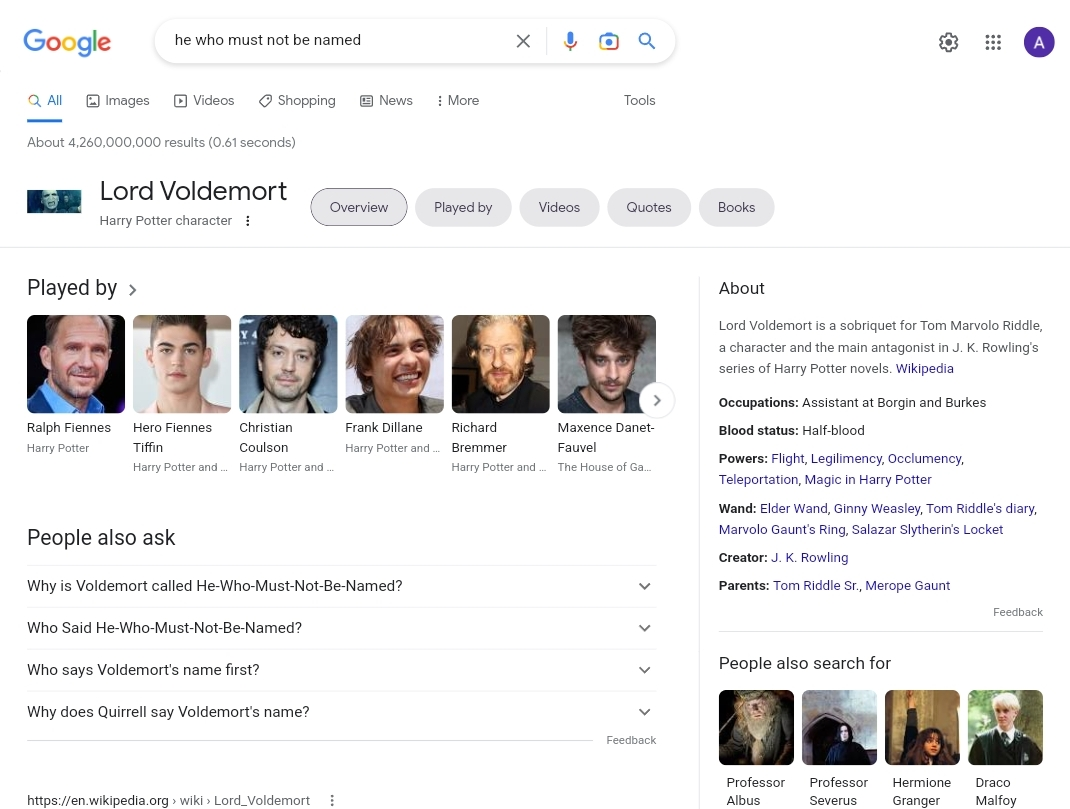
Or even if you misspell "iron man," you will still get relevant results.
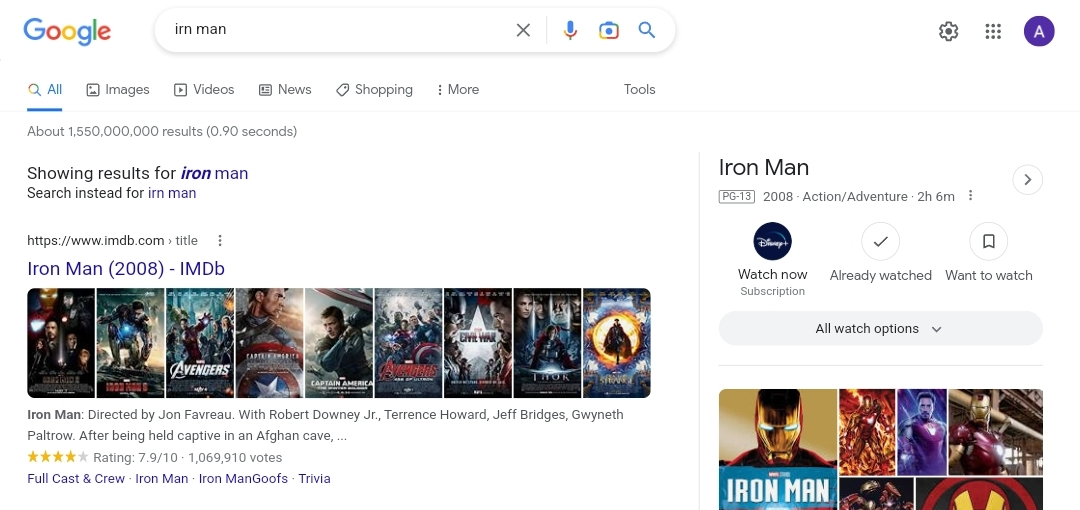
BERT
BERT (bidirectional encoder representations from Transformers) is an AI-driven algorithm developed by Google back in 2019. Like Hummingbird, BERT focuses solely on understanding the user’s search intent and the query's contextual meaning.
For example, whether a user types in "pizza hut nyc thin crust non veg" or "thin crust non veg pizza hut nyc", Google can extrapolate that both queries likely mean the same.
MUM
The multi-unified model (MUM) is believed to be 1000 times faster and more powerful than BERT. Not only does it understand the natural language, but it can also topics to the core and further suggest subtopics for a deeper understanding of the topic.
Let's say you're searching for information on the topic of "global warming." With MUM, Google can generate subtopics to provide a deeper understanding of the topic.
For example, MUM might suggest subtopics such as "causes of global warming," "impact on sea levels," "renewable energy solutions," and "government policies."
Why Semantic Search Matters for SEO?
When a semantic search is initiated, your search engine combines the user’s intent and context of the query and builds a relationship between all the words in your search query— in turn yielding the most accurate SERP results.
But how does this contribute to SEO? Here are 5 reasons semantic search matters for SEO:
Satisfying User Intent
Semantic search helps search engines understand the context of a search query and return more relevant results. By doing so, it satisfies user intent, which is the ultimate goal of any search engine optimization effort. When search engines can accurately interpret the meaning behind a user's query, they're more likely to present the most helpful and useful results.
This can lead to better user engagement and satisfaction, which can, in turn, improve your website's SEO performance.
Higher Click-Through Rates
Semantic search can help enhance the performance of your search results by providing additional content formats like images, videos, and featured snippets. It also helps voice search become more convenient, therefore enhancing the search experience.
This can make your search results more visually appealing and informative. Plus, it is a great way to reach a wider audience and get more people to click on your content in the SERPs.
Taking Technical SEO into Account
One of the benefits of semantic search for SEO is that it takes technical SEO into account. Technical SEO refers to the technical aspects of website optimization that affect search engine crawling, indexing, and ranking. Semantic search engines can analyze the structure and markup of web pages to determine the relevance of the content to a user's search query.
For example, if a user searches for "best pubs in New York City," a semantic search engine can analyze the user's intent to pinpoint the content of web pages that mention pubs in New York City.
It can then rank the results based on the relevance and quality of the content, taking into account factors such as page load speed, mobile-friendliness, and site architecture.
5 Tips to Optimize Your Content for Semantic Search
Here are 5 actionable tips to optimize your content for semantic search:
Create Semantic Entities and Topic Clusters
Semantic entities are "chunks" of meaningful content that provide more context for the words you're using and make it easier for search engines to return accurate searches.
Topic clusters, on the other hand, are content groups that link back to a main pillar page. This helps search engines understand the structure and hierarchy of your site.
For example, if you run a health and fitness blog and write about "cardio workouts," the semantic entities and topic clusters would be as follows:
Semantic Entities:
-
Cardio Workouts
-
Strength Training Exercises
-
Healthy Nutrition Tips
Topic Clusters:
-
Cardio Workouts:
-
"The Benefits of Running for Cardiovascular Health"
-
"Swimming Workouts for a Full-Body Workout"
-
-
Strength Training:
-
"5 Bodyweight Exercises for Building Muscle If You're a Novice"
-
"Resistance Band Workouts You Can Carry Out at Home"
-
-
Nutrition:
-
"How Much Protein Should You Consume and Why?"
-
"The Handbook for Planning Your Diet If You Want to Lose Fat"
-
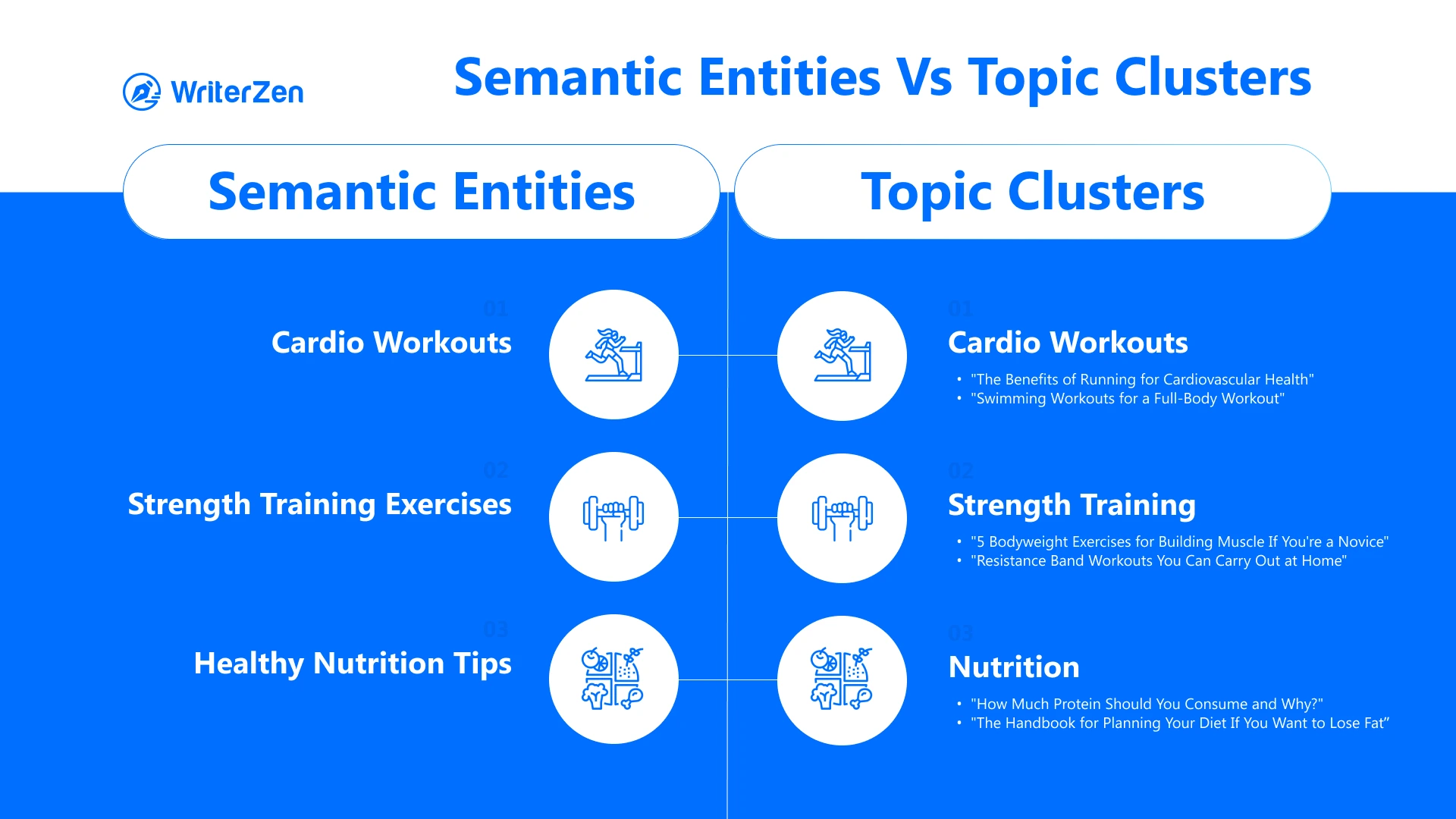
Don't confuse topic clusters and semantic entities; the latter focuses on creating content that helps search engines better comprehend the content's topic and context. The former involves grouping content around a central pillar so search engines can determine a site's expertise and authority on a particular topic.
Together, both give insight into the breadth and depth of your site's content, allowing readers to explore relevant topics to engage more deeply with your content.
Optimize Content for Featured Snippets
Featured snippets are brief, informative summaries that appear at the top of Google search results in a special box. They provide direct and accurate information to a user's search query, making it easier for them to find what they're looking for without having to click through multiple search results.
Let's say you're searching for "how to change a tire" on Google. A featured snippet might appear at the top of the search results, displaying a step-by-step guide on how to change a tire with clear instructions.
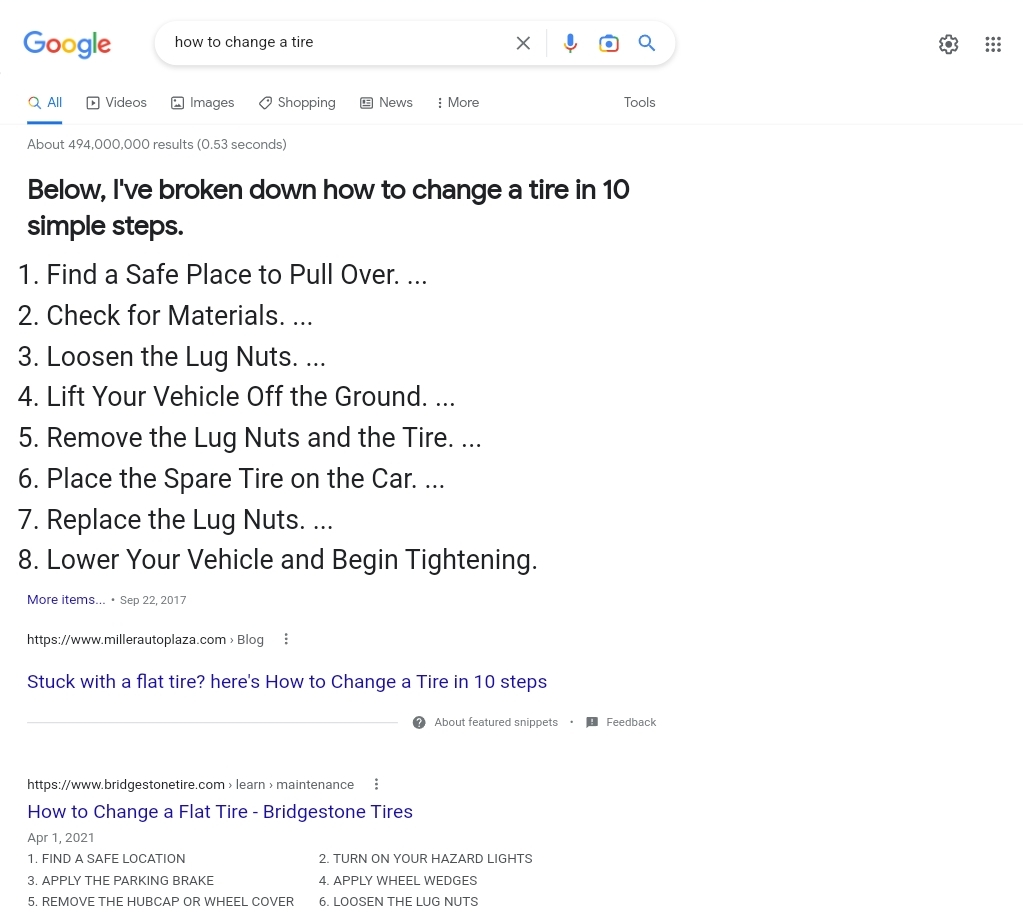
Using this, you can learn how to change a tire without having to sift through multiple search results. Quite efficient, huh?
Optimizing your content for featured snippets increases your visibility and attracts more traffic to your site.
So, it's a good idea to consider creating answers to specific questions or providing concise, actionable information when publishing blogs.
For example, if you're writing about yoga, you could provide a quick answer like this to the question “What are the benefits of yoga:”
-
"reduces stress and anxiety"
-
"improves flexibility and balance"
-
"promotes weight loss"
-
"improves quality of sleep"
And so on.
Optimize Content for Rich Results
Rich results are essentially search results that are enhanced with additional visual or interactive features, such as images, videos, reviews, or other structured data that help search engines better understand the content and context of the page.
So, if you're searching for a product like "alfredo pasta recipe," rich results will display images of the product, along with a detailed list of specifications like rating, cooking time, and ingredients information.
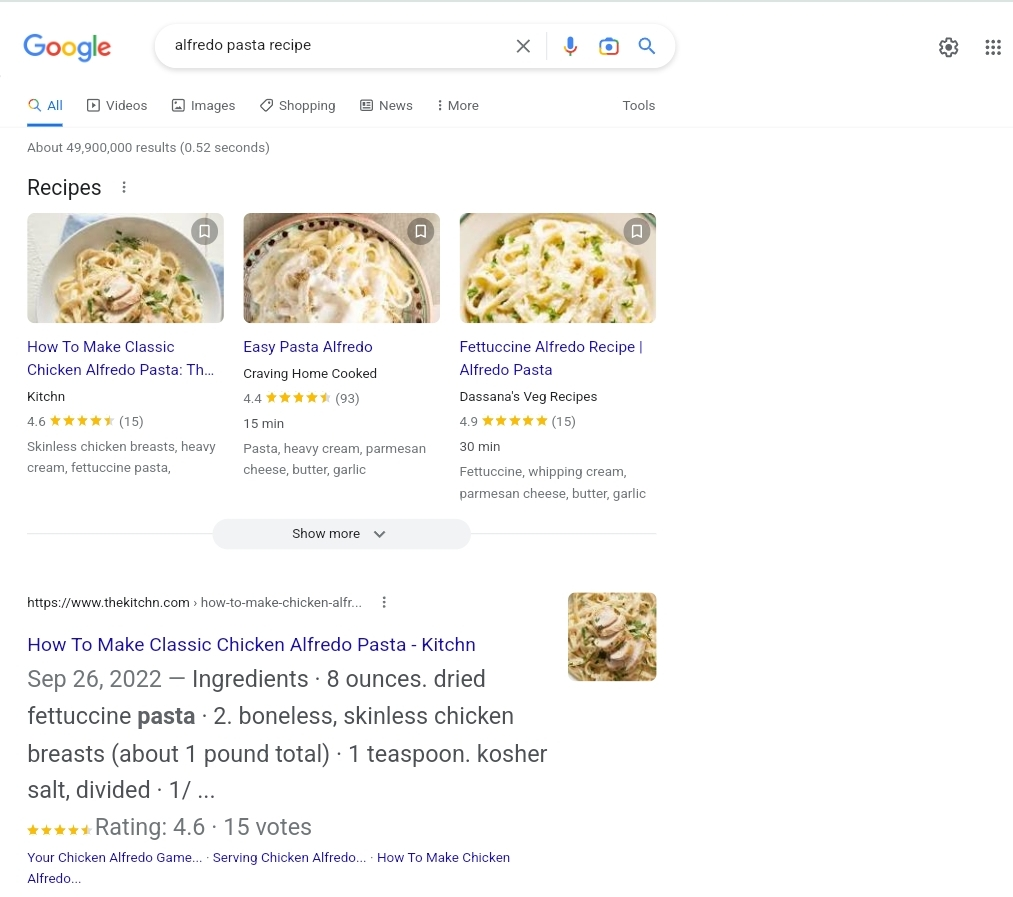
To optimize for rich results, you need to provide structured data markup on your site that tells search engines what types of information are included in your content.
For example, if you're writing a blog post about "Healthy Smoothie Recipes," you might provide structured data markup that includes recipe information like ingredients, cooking time, and nutritional information.
This will help search engines display your content in a more visually appealing way, which can increase click-through rates and drive more traffic to your site.
Optimize Content for Voice Search
To optimize your content for voice search, you need to consider the types of questions that users might ask and the way they might phrase them. For example, if you sell vegan burgers, you'd want to create content that answers questions like "Where can I find vegan burgers in NYC?" and "What are the best places for vegan burgers in NYC?"
By doing so, you increase the chances that your content will appear in voice search results when someone asks these questions.
Final Thoughts
So, after all that discussion about semantic search, what's the key takeaway? Well, it's simple really. To succeed in content marketing in today's digital landscape, you need to focus on the user.
By understanding your audience's search intent and creating high-quality content that addresses their needs, you can improve your chances of ranking higher in search engine results pages (SERPs) and, ultimately, drive more traffic to your website. But it's not just about search engines. At the end of the day, it's the people behind those searches that matter most.
So, as you plan your content marketing campaigns, keep your users front and center. By creating content that speaks to their needs, you'll not only rank higher in SERPs but also build stronger relationships with your audience. In the end, isn't that what it's all about?



